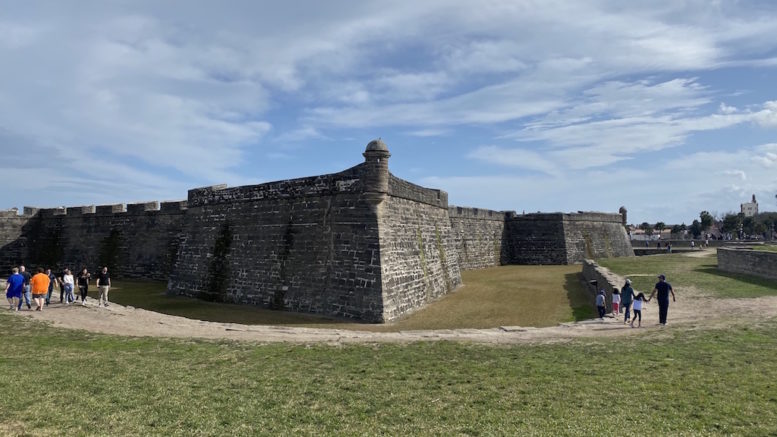By Mara Mazar
For St. Augustine historian Dr. Leslee Keys, saving old buildings has been her entire career. With climate change threatening, the rich history of St. Augustine, Florida, fears of sea level rise and recent hurricanes has Keys working harder than ever.
“To think that all of this effort here and elsewhere would be for not because buildings are just going to float away or be damaged was a very painful realization,” Keys, professor and Director of Historic Preservation at Flagler College, said.
There are over 2,500 buildings considered historic in St. Augustine, which makes it so unique, yet so important to protect. The rise of climate change threatens these buildings and the history that the city holds.
In the last four years, St. Augustine has been hit by three hurricanes, flooding the streets, historic sites, local businesses and homes. Hurricanes alone are not the only threat caused by climate change. Sea level rise is also a problem, but St. Augustine city leaders have a plan.
St. Augustine Mayor and Flagler College Professor of Law and History Tracy Upchurch, explained that there are several approaches that the city could take. The first is to adapt, the second is to defend and the third is to retreat.
“The city of St. Augustine officially is not considering any type of retreat. That is where you basically move infrastructure and you move out of areas that are prone to flooding, and we just have not done that and don’t plan on doing that,” Upchurch said.
“We certainly have been heavily involved in issues of defending, as well as adapting.”
Some of these projects that are being done to defend and adapt are already in the works. One of the more popular projects would be the new 7-foot sea wall that will line Lake Maria Sanchez in a U-shape way. The wall is to protect the residents and history located in downtown’s historic district. This project also includes installing 26 valves to prevent flooding during storms.
While the wall is more of a defensive approach, city leaders are all starting to talk about a project that is more along the lines of the adapt approach. This project has to do with raising homes.
“Whenever anybody with any sense is thinking about buying a house in the area, the first question I think they are asking, or in my opinion should be asking, is how did it do in the hurricanes?” Upchurch said.
A report by FEMA, Reducing Flood Risk to Residential Buildings That Cannot be Elevated, suggests raising the home so that the first level of the home is a basement that allows flood water to enter and exit.
“There are folks who are raising houses to a second story and with the understanding that the ground floor of the house would basically be subject to being washed away in the sense that the water can come in and come out, and then it can be easily brought back to condition,” Upchurch said.
When it comes to St. Augustine’s historical sites, the plan becomes a little more difficult. Most of the historical landmarks such as Castillo de San Marcos and Flagler College are built on or out of coquina. Coquina is a soft limestone made of broken shells. Coquina structures are nearly impossible to move or raise, according to City Commissioner Roxanne Horvath.
St. Augustines gets 6 million visitors a year, according to Horvath. The historical attractions are what make St. Augustine so unique.
“We are known for our history,” Horvath said.
“It is our number one strongest tourist draw and we are all proud of it.”
Horvath worries that with the continuation of sea level rise and hurricanes hitting the small city, the slowly decaying coquina structures will not hold up.
“My fear is probably the shocks of, you know, hurricanes more than sea level rise. Sea level rise is slower and more of a stress. We have time to prepare for that,” Horvath said.
“But, you know, it’s the shocks that scare me the most.”
Although it won’t solve climate change, money is a crucial tool when it comes to defending and adapting the city.
Keys works specifically with preserving Flagler College and has raised $10 million dollars since she was hired 15 years ago.
“Few cities are as vulnerable as St. Augustine. Miami gets a lot of attention because it’s glitzy and it’s big and it has millions of dollars. We don’t have $400 million, for example, to raise our streets and sidewalks, and that’s not us anyway,” Keys said. “There is never enough money.”
St. Augustine’s tourist industry is a multibillion-dollar based on the city’s history. There are fifty to sixty thousand people alone that come to watch the fireworks, according to Keys.
“[The History] is what our city has been built on. That’s what has rescued this city economically every time,” Keys said.



Be the first to comment on "The Dangers Our History Faces With The Rise of Climate Change"